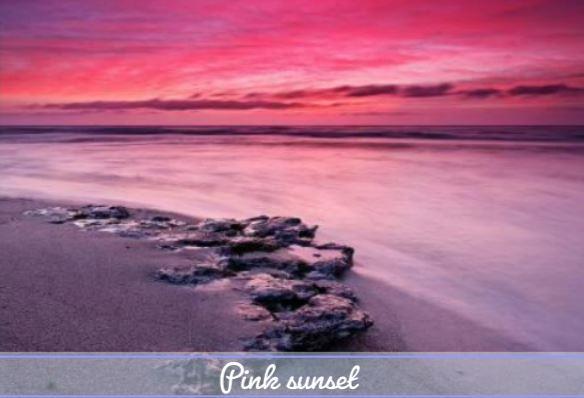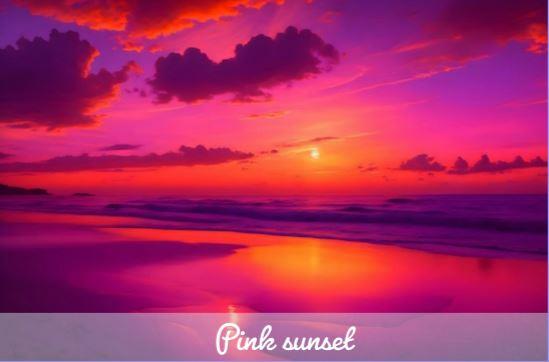Table of Contents
ToggleIntroduction to Pink Sunsets
Sunsets are a daily spectacle that captivates us with their vibrant hues of orange, yellow, and red. They light up the sky, making them a favorite subject for photographers and romantics alike. But have you ever wondered what causes these breathtaking displays of color? Or why sometimes the sunset turns a beautiful shade of pink? The answer lies in a combination of natural and human-induced phenomena.
The Science Behind Sunsets
Sunsets are created by the scattering of light waves, which break up sunlight in the atmosphere. Although sunlight appears white to our eyes, it actually consists of all colors of the spectrum – from long-wavelength red to short-wavelength blue and violet.
During the day, particles in our atmosphere – such as water vapor, dust, and ash – primarily reflect back short-wavelength blue light from the sun’s spectrum. This is why the sky appears blue during the day. However, as the sun sets and its angle relative to the horizon changes, its light has to pass through a greater distance of the atmosphere. This results in longer-wavelength colors like red, yellow, and orange lighting up the sky.
The Mystery of Pink Sunsets
So what causes a pink sunset? Sunlight contains a full spectrum of colors, just like a rainbow. However, unlike rainbows which are caused by the refraction of sunlight in water droplets, sunset colors come from light being scattered or reflected as it passes through our atmosphere. The pink color in sunsets is a result of the red part of the spectrum mixing with additional white light. This occurs when there are more aerosols or fine particulate particles in the air to scatter and reflect the sunlight spectrum.
The Changing Colors of Sunsets
The colors of sunsets can vary each evening due to different atmospheric conditions that affect how sunlight reaches our eyes. For instance, sunsets are more intense during winter months when there is less water vapor in the atmosphere. Lower humidity means fewer water droplets for aerosol particles to interact with, resulting in purer and more vibrant colors.
Effects of Atmospheric Conditions on Sunset Colors and Impact of Pollution on Sunset Colors
Pollution levels can also affect sunset colors. Whether it’s man-made pollution from burning fossil fuels or natural events like hurricanes or volcanic eruptions that throw dust plumes into the sky, each can influence the appearance of sunsets. For example, volcanic activity can result in sunsets with a more blue or purple hue, while industrial smog can lead to dark red, purple, or pink sunsets.

Conclusion: The Beauty and Science of Sunsets
Q&A
Q1: What causes the vibrant colors of a sunset?
A1: Sunsets are created by the scattering of light waves, which break up sunlight in the atmosphere. The light from the sun is made up of all colors of the spectrum. As the sun sets, its light has to pass through more of the Earth’s atmosphere, causing more red, yellow, and orange light to reach us, lighting up the sky.
Q2: Why sometimes Pink Sunset appears?
A2: The pink color in sunsets is a result of the red part of the spectrum mixing with additional white light. This occurs when there are more aerosols or fine particulate particles in the air to scatter and reflect the sunlight spectrum.
Q3: Why do the colors of sunsets vary each evening?
A3: The colors of sunsets can change due to different atmospheric conditions that affect how sunlight reaches our eyes. For instance, sunsets are more intense during winter months when there is less water vapor in the atmosphere. Pollution levels can also affect sunset colors.
Q4: How does pollution affect the color of sunsets?
A4: Pollution levels can influence the appearance of sunsets. Man-made pollution from burning fossil fuels or natural events like hurricanes or volcanic eruptions that throw dust plumes into the sky can make sunsets look more blue or purple. Industrial smog can lead to dark red, purple, or pink sunsets.


1 thought on “Why are Sunsets Pink? The Science Behind the Stunning Sky Colors”